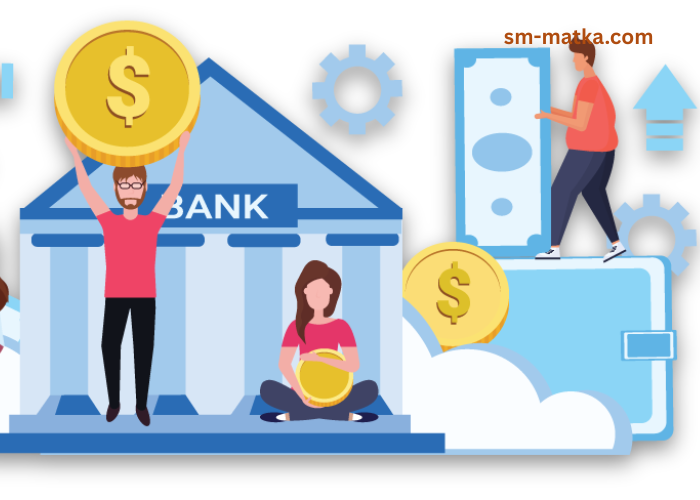
Creating a personal finance plan is crucial for financial stability and achieving long-term goals. Whether you’re saving for retirement, paying off debt, or building an emergency fund, a personal finance plan can help you navigate your financial journey. In this article, we’ll explore the essential steps to create a personal finance plan that works, with actionable advice and tips to help you take control of your finances.
Why is a Personal Finance Plan Important?
Before diving into the specifics of how to create a personal finance plan, it’s essential to understand why having one is important. A personal finance plan acts as a roadmap for your financial life. It helps you:
- Track your spending: Understand where your money is going and identify areas where you can save.
- Set financial goals: Whether it’s saving for a vacation, buying a house, or preparing for retirement, having clear goals makes it easier to allocate your resources effectively.
- Reduce financial stress: Having a plan provides clarity and peace of mind by knowing you are actively working towards financial security.
- Prioritize savings and investments: Ensuring that you’re saving and investing appropriately can lead to long-term wealth creation.
Step 1: Assess Your Current Financial Situation
Before making any changes, take a deep dive into your current financial state. This will give you a baseline and help you understand where you stand. The assessment includes reviewing your income, expenses, assets, and liabilities.
Income
Start by documenting all sources of income. This could include your salary, side jobs, dividends, rental income, and any other sources of cash flow. Understanding your monthly or yearly income is essential for setting realistic financial goals.
Expenses
Track your monthly expenses by categorizing them into fixed (rent, mortgage, utilities) and variable (entertainment, food, etc.) expenses. Use a budgeting tool or app to get an accurate picture of where your money is going. Identifying areas where you can reduce spending is crucial for building savings and paying down debt.
Assets
List your assets, including savings, investments, property, and other valuables. Knowing the total value of your assets will give you insight into your net worth and provide a starting point for growing your wealth.
Liabilities
Liabilities include any debts you owe, such as student loans, mortgages, credit card debt, and car loans. Understanding your liabilities is crucial because paying off high-interest debts should be a priority in your financial plan.
Step 2: Set Specific Financial Goals
Now that you have a clear understanding of your financial situation, it’s time to set some goals. Financial goals should be:
- Specific: Clearly define what you want to achieve. For example, “Save $5,000 for a down payment on a house.”
- Measurable: Determine how much money you need to save or invest to reach your goal.
- Achievable: Set realistic goals that align with your income and expenses.
- Relevant: Ensure the goals are meaningful to your life.
- Time-bound: Set a deadline for achieving each goal.
Here are a few examples of financial goals:
- Short-Term Goals: Save for a vacation, pay off credit card debt, build an emergency fund.
- Mid-Term Goals: Save for a home down payment, pay off student loans.
- Long-Term Goals: Build a retirement nest egg, pay off your mortgage.
Step 3: Create a Budget
Budgeting is a critical step in creating a personal finance plan. A budget helps you control your spending and ensure you are allocating funds towards your goals. There are several types of budgeting methods, and you should choose the one that works best for your lifestyle.
Zero-Based Budgeting
In a zero-based budget, you assign every dollar of your income to a specific category, leaving no money unaccounted for. This method forces you to be disciplined with your spending and ensures you’re prioritizing your financial goals.
50/30/20 Rule
The 50/30/20 rule divides your income into three categories:
- 50% for needs: Rent, utilities, food, and other necessities.
- 30% for wants: Dining out, entertainment, travel, etc.
- 20% for savings and debt repayment: Contribute towards building an emergency fund, retirement savings, and paying off any debts.
Envelope System
The envelope system involves physically dividing your cash into envelopes, each representing a specific category (e.g., groceries, entertainment, etc.). This is a cash-based budgeting method that helps limit overspending in certain areas.
Step 4: Build an Emergency Fund
An emergency fund is an essential part of any personal finance plan. It acts as a financial cushion for unexpected expenses like medical bills, car repairs, or job loss. Ideally, your emergency fund should cover three to six months of living expenses.
How to Build an Emergency Fund
- Start small: Begin with a goal of saving $500 or $1,000.
- Automate savings: Set up automatic transfers to your savings account each month.
- Cut unnecessary expenses: Review your budget and cut back on discretionary spending to free up money for your emergency fund.
Having an emergency fund gives you peace of mind and prevents you from going into debt when the unexpected happens.
Step 5: Pay Off High-Interest Debt
Debt can be a significant obstacle in achieving financial freedom. High-interest debt, such as credit card debt, can accumulate quickly, making it difficult to save and invest. Prioritize paying off these high-interest debts before focusing on other financial goals.
Debt Repayment Strategies
- Debt Snowball Method: Focus on paying off the smallest debt first while making minimum payments on others. Once the smallest debt is paid off, move on to the next smallest, creating a “snowball” effect.
- Debt Avalanche Method: Pay off debts with the highest interest rates first, saving you more money in the long run.
- Debt Consolidation: Consider consolidating high-interest debts into a single loan with a lower interest rate.
Once you’ve cleared high-interest debts, you can redirect the money you were paying towards debts into savings or investments.
Step 6: Start Saving and Investing
Once you have your budget in place and your emergency fund established, it’s time to focus on saving and investing for the future. These two areas are crucial for building long-term wealth and achieving financial independence.
Saving vs. Investing
- Saving: This involves putting money aside for short-term goals or safety. Savings accounts, certificates of deposit (CDs), and money market accounts are low-risk savings options.
- Investing: Investing involves putting money into assets such as stocks, bonds, or real estate with the goal of growing wealth over time. While investing carries more risk than saving, it offers higher potential returns.
Types of Investments
- Stocks: Investing in individual companies offers the potential for high returns, but it also carries significant risk.
- Bonds: Bonds are less risky than stocks and provide steady income, but they offer lower returns.
- Mutual Funds & ETFs: These funds pool money from many investors to buy a diversified portfolio of stocks, bonds, or other assets.
- Real Estate: Investing in property can generate income and appreciation over time.
Start small with investments and gradually increase your contributions as you become more comfortable. Make sure to consult a financial advisor to determine the best investment strategy based on your goals and risk tolerance.
Step 7: Review and Adjust Your Plan Regularly
Your financial situation is likely to change over time, so it’s important to review and adjust your personal finance plan regularly. Set a schedule to evaluate your financial progress and make adjustments as necessary. This could be done monthly, quarterly, or annually, depending on your needs.
Key Areas to Review
- Income changes: If you receive a raise, a new job, or any additional income, adjust your budget and goals accordingly.
- Debt levels: As you pay down debt, adjust your debt repayment strategy to ensure you are staying on track.
- Investment performance: Review your investments regularly to ensure they align with your risk tolerance and financial goals.
Adjust your plan as needed to keep progressing toward your financial goals.
Conclusion
Creating a personal finance plan that works is a vital step in securing your financial future. By assessing your current situation, setting specific goals, creating a budget, building an emergency fund, paying off debt, and investing for the future, you can take control of your finances and make informed decisions that will help you achieve financial independence. Regularly reviewing and adjusting your plan ensures that you stay on track and continue making progress towards your goals. With discipline and dedication, you can create a personal finance plan that truly works for you.



